Does anyone else face the problem of tracking your crypto funds?
You might actually be overwhelmed trying to track and manage where all your funds are when you place portions of them in farms, staking them with delegators to even NFTs.
Its true, the wonders of the DeFi space brings plenty of funding options but as you move from one shiny project to another, tracking every single farm, pool and wallet may be the least of your priorities.
Fret not, this article will help you mange your funds to the dollar and track where they are amongst the various networks in the space.
1. CoinMarketCap
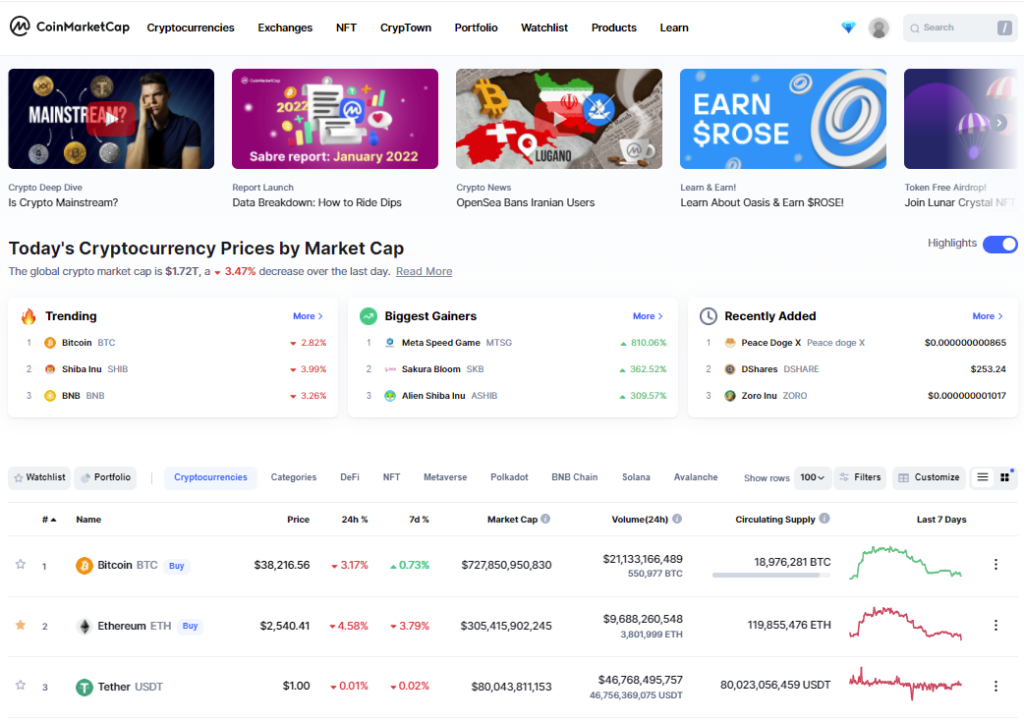
Let’s start with CoinMarketCap. Whether you are new to crypto or already achieved veteran status, you would have been on CoinMarketCap at least once in your journey.
If I can describe CoinMarketCap in a sentence, it is a “one-stop shop to all crypto information”. You’ll get access to the entire suit of information you require on all the cryptocurrency coins.
This includes current price, realtime market cap, and more detailed information on its volume and circulating supply.
It even provides an overview of where you can get the coins you are looking for, something I found pretty useful.
Beyond coins, it also provides data on your favourite NFTs too.

On the top right hand corner of the website, sign up to be a user on CoinMarketCap
Once that is done, you have to manually add the details of the tokens into your portfolio under the portfolio tab.
You would also be able to set alerts on your favourite coins in the watchlist page to track price action of the coins.
Personally, I set alerts on the website to track price movements of my coins based on key levels I monitor.
When I get a notification on the recent pump/dip I would be able to easily take the necessary actions. I must say this is the fastest, and with the lowest barriers-to-entry for all levels traders.
2. Ape Board: Cross-Chain DeFi Dashboard

In Ape Board Finance, you will be able to see all your assets tied within the different networks of your MetaMask wallet.
Basically, you would get an overview of where all your money is placed, categorized under the various networks you participated in, regardless of them being staked or being in liquidity pools.

If you have invested in protocols built on the list of blockchains above, you are in luck, as Ape Board supports currently more than 77 blockchains.
Notable blockchains include Ethereum, Avalanche, Solana and Polygon.

By connecting your wallet address, you are able to track your portfolio in DeFi without the need to log in. You can also monitor someone else’s address by inputting it here.

Ape Board shows you your current net worth and total claimable rewards at the top, splitting up by total assets and total debt.
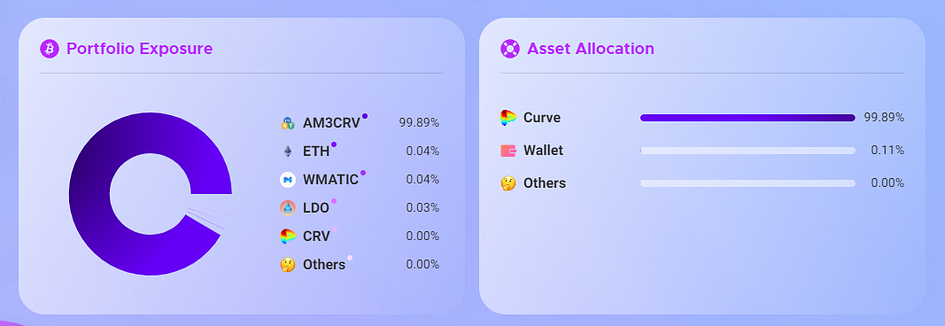
You are also able to view your portfolio exposure across multiple cryptocurrencies, and which protocols your token is deposited in.
Under ApeSearch, you are able to browse through an entire list of liquidity pools, by clicking on “Go Ape” you will be directed to the liquidity pool website directly.
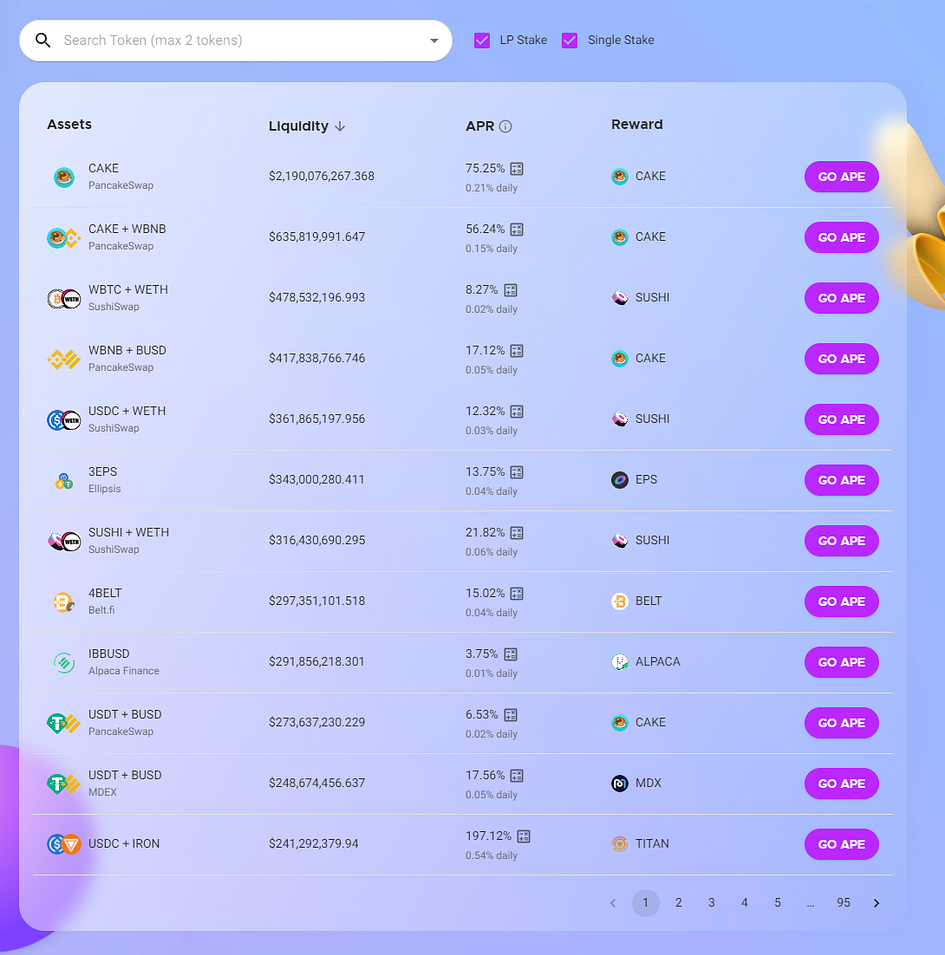
3. DeBank
Debank is an all-in-one cryptocurrency portfolio tracker designed to manage DeFi assets.
Debank allows users to track their full portfolio through various chains, compare interest rates, manage assets, find DeFi projects, analyze risks, and enabling users to perform token swap for token exchange.
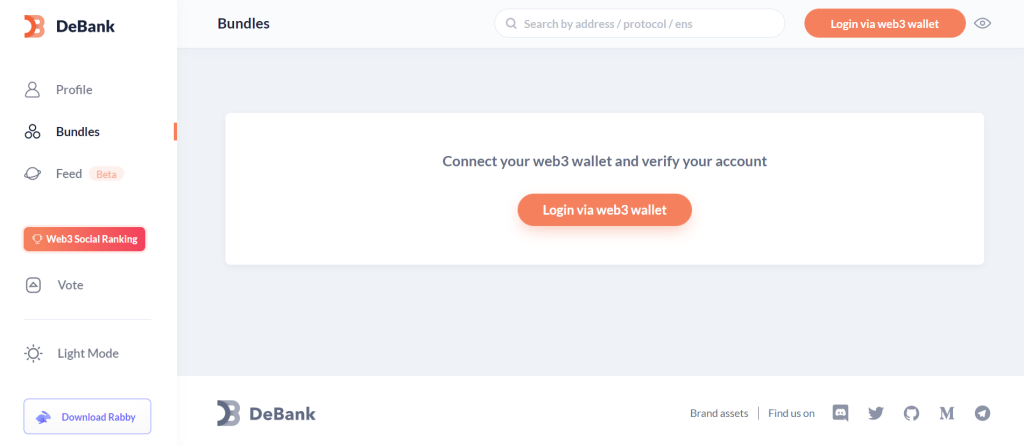
First, connect your wallet with the button on the top right hand column. Once connected, you will see a dashboard of all the tokens in the DeFi space you have invested in.

Similar to Ape Board, wallet addresses can be copied and tracked through this application. This way you will have access to view their portfolio holdings as well as their recent transaction in the different liquidity pools.
In my opinion, I use Apeboard more although their utilities are fairly similar. Apeboard has the edge for its user interface and you do not need to sign up before seeing your assets. Apeboard also gives you visibility and direct links to alternative farms on the network you are staking/providing liquidity for.
4. Delta Investment Tracker
Delta Investment Tracker was the first application I used to track my crypto assets. It stood out to me as I was able to track my equity assets along side my crypto assets. It is basically a multi-asset tracking app.

Delta provides accurate data for individuals to make the most of their money.
In my opinion, Delta solely focuses on your portfolio tracking and nothing else. However, it allows for great convenience at your fingertips.
5. Zerion
Last but not least, Zerion. Zerion is a mobile app which allows you to manage your entire DeFi portfolio.
The application allows you to track DeFi wallets/addresses. This would mean you would be able to track whales in the NFT space and keep up to do with their latest NFT purchases.
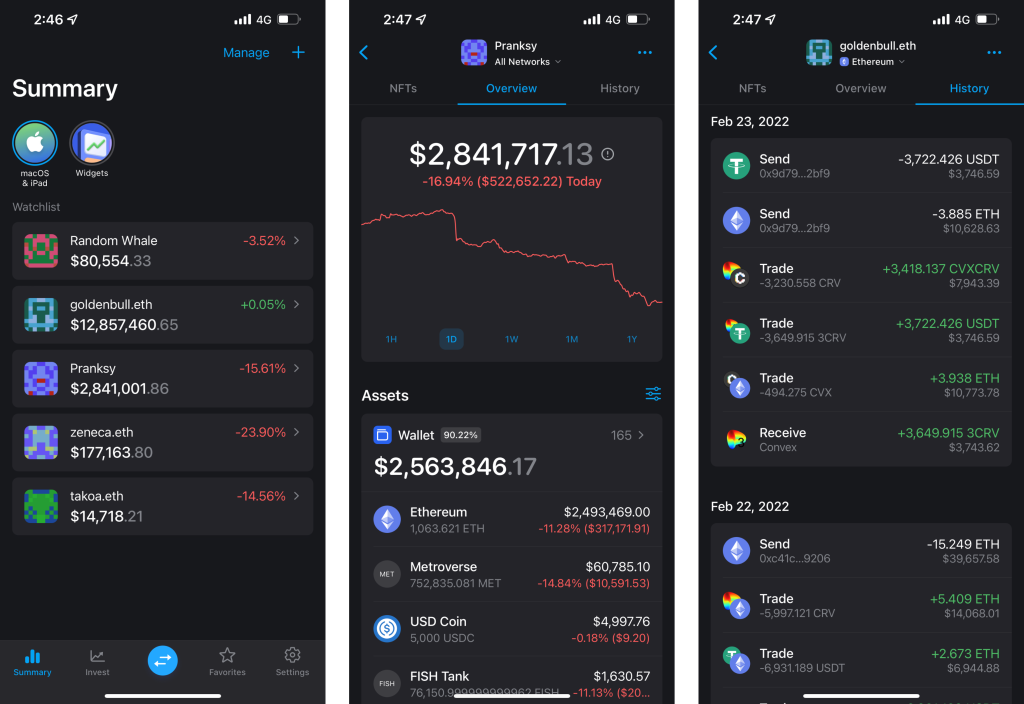
We all know what whales can do in creating a new trend in the space, the lights of NFT influencers like Gary Vee and Logan Paul all have strong influence in market movement due to their huge following.
With Zerion, you are able to track “whales” latest transactions, copy their trades to even know the value of their wallet on your mobile devices.
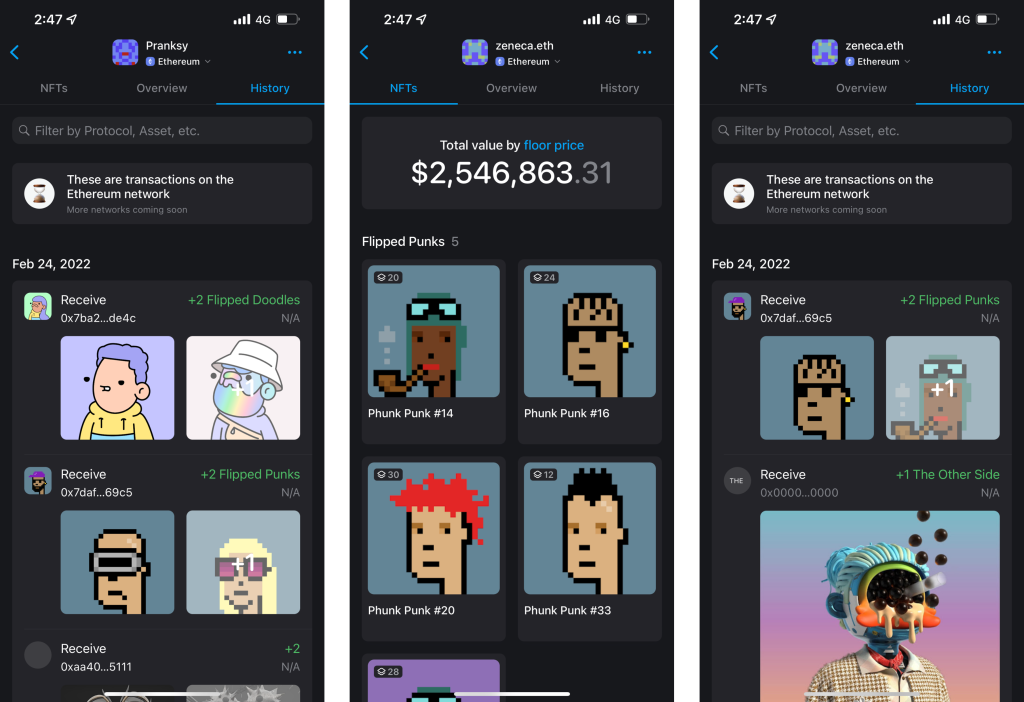
Closing thoughts
One thing centralized exchanges might not offer is the aspect of portfolio tracking. In my opinion, this aspect of crypto is important because of how fast things move in the space.
Especially when farms and liquidity pools are essential functions of DeFi, having a dashboard to see your gains
Regardless of being a day trader, swing trader or even a long term investor, the application above would be able to give the visibility you need to track your crypto assets. Manging all your assets in the DeFi space wouldn’t be any easier.
Featured Image Credit: Chain Debrief
Also Read: Want To Flip NFTs Like A Pro? Here Are 5 Tools For Evaluating And Trading NFTs



































